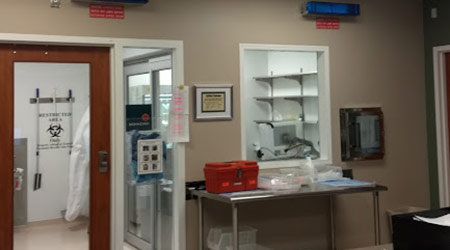
According to the World Health Organization, high-income countries like the U.S. generate approximately 0.5 kg -- or 1.1 pounds -- of hazardous medical waste per hospital bed per day. Because only 15% of medical waste is considered hazardous, this means each bed generates nearly 8 pounds of total waste per day.
Healthcare infection control measures can contribute significantly to the amount of waste a facility produces, particularly when disposable infection control measures are in use. Keep reading to learn about which types of infection control materials are disposable, how to safely dispose of those materials, and how to minimize the materials needed for your infection control protocol.
What is Considered Hazardous Waste?
The discussion of medical waste should always include a distinction between hazardous and non-hazardous medical waste. Hazardous materials that have special disposal protocol include:
- “Sharps” such as needles, razor blades, and disposable scalpels
- Infectious waste that is contaminated with blood or other bodily fluids
- Human tissue or fluids
- Hazardous chemicals including some laboratory solvents, mercury, or batteries
- Pharmaceuticals
- Radioactive waste
- Genotoxic waste
The items on the list above present a hazard to healthcare patients, staff, and the general public if the facility does not use proper disposal methods.
Disposable Infection Control Materials
Unless specifically contaminated with hazardous fluids, infection control materials do not fall into any of the hazardous waste categories. However, disposable infection control items such as plastic sheeting are still subject to proper disposal procedures. Other disposable infection control materials you may utilize or encounter include personal protective equipment (PPE) including suits and shoe covers as well as some cleaning materials.
How to Dispose of Infection Control Materials
Because infection control materials are not typically hazardous waste, there are more disposal options. The CDC recommends that during healthcare construction or renovation projects, workers dispose of large debris via window chutes, while still maintaining negative air pressure in the area of the work. Of course, this process will not work for plastic sheeting that is necessary to maintain the contained area in the first place. Upon completion of the work, infection control materials should be cleaned as best as possible and disposed of in the standard way for other facility waste.
Alternatives to Disposable Infection Control Materials
Disposing of hazardous materials requires time, effort, and expense. In fact, materials deemed to be hazardous can cost as much as 20 times more to dispose of than general waste. Most infection control materials can be considered general waste, but in the case of infection control, plastic sheeting and other materials may become contaminated. To avoid the time-consuming and potentially hazardous process of infection control material disposal, consider using reusable options that can be sterilized.
Reusable Infection Control Options
An aluminum anteroom can not only be used time and time again for infection control, maintenance, construction, and renovation projects but can also be quickly disinfected and stored until it is needed again. For smaller maintenance projects, such as those that require ceiling access, a portable dust containment unit can not only reduce waste but also allows workers to be more efficient. Both anterooms and containment carts offer superior infection control for facilities managers as assessed by ASHE and are easy to disinfect between used. When the aluminum structures reach the end of their usable life -- which can be many years in the future -- they can be disinfected and recycled.
Learn more about hospital anterooms when you download our free guide below.
